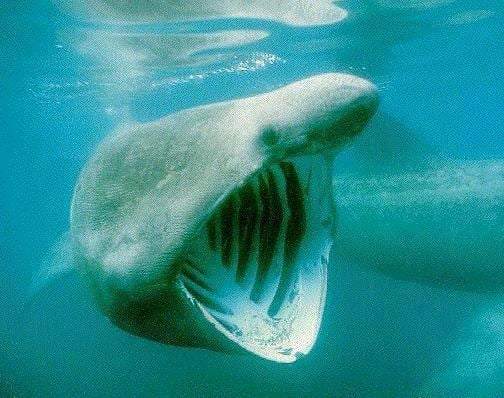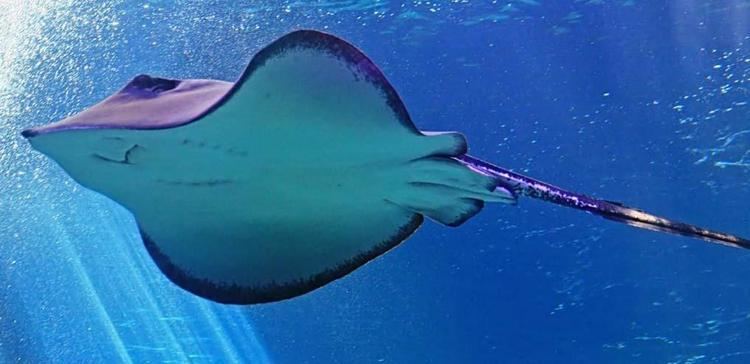Scientific name Chondrichthyes Rank Class | Clade Eugnathostomata | |
 | ||
Lower classifications Shark, Batoids, Chimaera, Stingray, Holocephali | ||
Shark superpowers world s deadliest
Chondrichthyes (/kɒnˈdrɪkθᵻ.iːz/; from Greek χονδρ- chondr- 'cartilage', ἰχθύς ichthys 'fish') is a class that contains the cartilaginous fishes: they are jawed vertebrates with paired fins, paired nares, scales, a heart with its chambers in series, and skeletons made of cartilage rather than bone. The class is divided into two subclasses: Elasmobranchii (sharks, rays, skates, and sawfish) and Holocephali (chimaeras, sometimes called ghost sharks, which are sometimes separated into their own class).
Contents
- Shark superpowers world s deadliest
- Skeleton
- Appendages
- Body covering
- Respiratory system
- Immune system
- Reproduction
- Classification
- Evolution
- Phylogeny
- References

Within the infraphylum Gnathostomata, cartilaginous fishes are distinct from all other jawed vertebrates.
Skeleton

The skeleton is cartilaginous. The notochord, which is present in the young, is gradually replaced by cartilage. Chondrichthyans also lack ribs, so if they leave water, the larger species' own body weight would crush their internal organs long before they would suffocate.

As they do not have bone marrow, red blood cells are produced in the spleen and the epigonal organ (special tissue around the gonads, which is also thought to play a role in the immune system). They are also produced in the Leydig's organ, which is only found in certain cartilaginous fishes. The subclass Holocephali, which is a very specialized group, lacks both the Leydig's and epigonal organs.
Appendages

Apart from electric rays, which have a thick and flabby body, with soft, loose skin, chondrichthyans have tough skin covered with dermal teeth (again, Holocephali is an exception, as the teeth are lost in adults, only kept on the clasping organ seen on the caudal ventral surface of the male), also called placoid scales (or dermal denticles), making it feel like sandpaper. In most species, all dermal denticles are oriented in one direction, making the skin feel very smooth if rubbed in one direction and very rough if rubbed in the other.
Originally, the pectoral and pelvic girdles, which do not contain any dermal elements, did not connect. In later forms, each pair of fins became ventrally connected in the middle when scapulocoracoid and pubioischiadic bars evolved. In rays, the pectoral fins have connected to the head and are very flexible.
One of the primary characteristics present in most sharks is the heterocercal tail, which aids in locomotion.
Body covering
Chondrichthyans have toothlike scales called dermal denticles or placoid scales. Denticles provide two functions, protection and in most cases, streamlining. Mucous glands exist in some species as well.
It is assumed that their oral teeth evolved from dermal denticles that migrated into the mouth, but it could be the other way around as the teleost bony fish Denticeps clupeoides has most of its head covered by dermal teeth (as does, probably, Atherion elymus, another bony fish). This is most likely a secondary evolved characteristic, which means there is not necessarily a connection between the teeth and the original dermal scales.
The old placoderms did not have teeth at all, but had sharp bony plates in their mouth. Thus, it is unknown whether the dermal or oral teeth evolved first. Nor is it sure how many times it has happened if it turns out to be the case. It has even been suggested that the original bony plates of all the vertebrates are gone and that the present scales are just modified teeth, even if both teeth and the body armor have a common origin a long time ago. However, there is no evidence of this at the moment.
Respiratory system
All chondrichthyans breathe through five to seven pairs of gills, depending on the species. In general, pelagic species must keep swimming to keep oxygenated water moving through their gills, whilst demersal species can actively pump water in through their spiracles and out through their gills. However, this is only a general rule and many species differ.
A spiracle is a small hole found behind each eye. These can be tiny and circular, such as found on the nurse shark (Ginglymostoma cirratum), to extended and slit-like, such as found on the wobbegongs (Orectolobidae). Many larger, pelagic species, such as the mackerel sharks (Lamnidae) and the thresher sharks (Alopiidae), no longer possess them.
Immune system
Like all other jawed vertebrates, members of Chondrichthyes have an adaptive immune system.
Reproduction
Fertilization is internal. Development is usually live birth (ovoviviparous species) but can be through eggs (oviparous). Some rare species are viviparous. There is no parental care after birth; however, some chondrichthyans do guard their eggs.
Classification
The class Chondrichthyes has two subclasses: the subclass Elasmobranchii (sharks, rays, skates, and sawfish) and the subclass Holocephali (chimaeras). To see the full list of the species, click here.
Evolution
Cartilaginous fish are considered to have evolved from acanthodians. Originally assumed to be closely related to bony fish or a polyphyletic assemblage leading to both groups, the discovery of Entelognathus and several examinations of acanthodian characteristics indicate that bony fish evolved directly from placoderm like ancestors, while acanthodians represent a paraphyletic assemblage leading to Chondrichthyes. Some characteristics previously thought to be exclusive to acanthodians are also present in basal cartilaginous fish. In particular, new phylogenetic studies find cartilaginous fish to be well nested among acanthodians, with Doliodus and Tamiobatis being the closest relatives to Chondrichthyes.
Unequivocal fossils of cartilaginous fishes first appeared in the fossil record by about 395 million years ago, during the middle Devonian. The radiation of elasmobranches in the chart on the right is divided into the taxa: Cladoselache, Eugeneodontiformes, Symmoriida, Xenacanthiformes, Ctenacanthiformes, Hybodontiformes, Galeomorphi, Squaliformes and Batoidea.
By the start of the Early Devonian, 419 mya (million years ago), jawed fishes had divided into three distinct groups: the now extinct placoderms (a paraphyletic assemblage of ancient armoured fishes), the bony fishes and the clade including spiny sharks and early cartilaginous fish. The modern bony fishes, class Osteichthyes, appeared in the late Silurian or early Devonian, about 416 million years ago. Cartilaginous fishes first appeared about 395 Ma, having evolved from Doliodus-like spiny shark ancestors. The first abundant genus of shark, Cladoselache, appeared in the oceans during the Devonian Period.
A Bayesian analysis of molecular data suggests that the Holocephali and Elasmoblanchii diverged in the Silurian (421 million years ago) and that the sharks and rays/skates split in the Carboniferous (306 million years ago).
